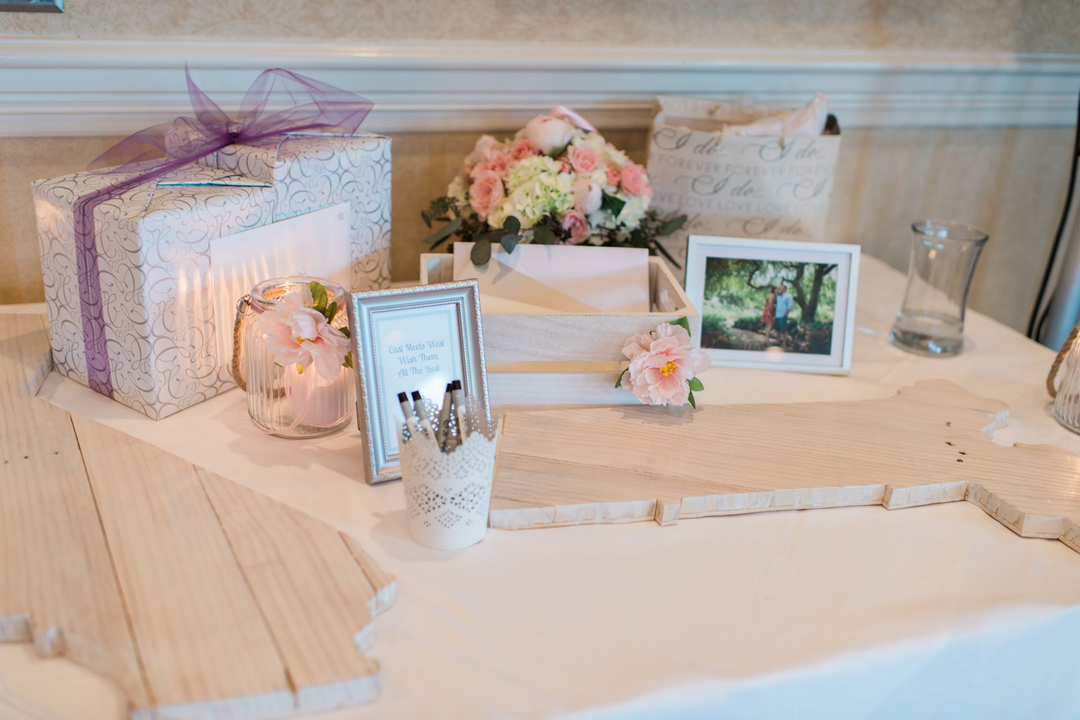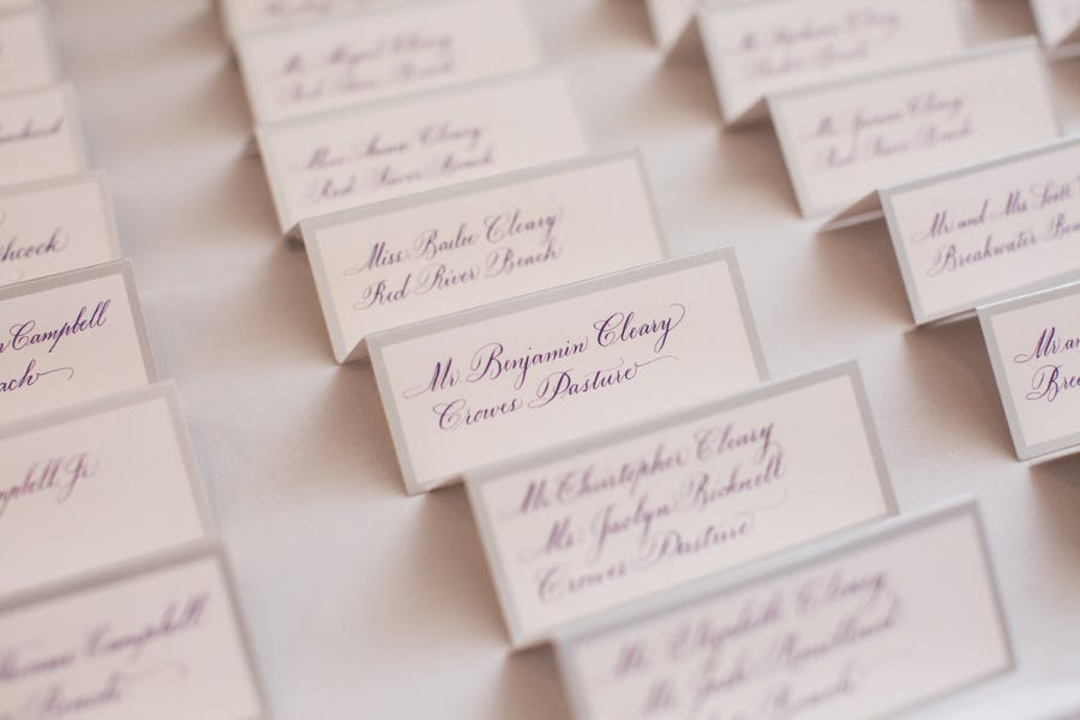- Expert advice/
- Wedding planning 101/
- Wedding decorations/
- Traditional Wedding Decor Ideas
- Wedding decorations
Traditional Wedding Decor Ideas
Weddings are built on traditions, old ones, and new ones. For a little bit of something old, check out these traditional wedding decor ideas from Zola!
Last updated February 5, 2024

When you’re planning your wedding, many want to express their own unique story while also paying homage to wedding traditions. After all, your culture and history play a vital role in your identities as individuals and as a married couple. But depending on you and your spouse’s background, “tradition” might mean anything from walking down the aisle to the sound of bagpipes to smashing a plate or glass. Many of these traditions invoke good fortune for the newlyweds on their big day.
Whatever your cultural roots, traditional decor can be a beautiful way to demonstrate your connection with your heritage, and even celebrate two cultures coming together on your wedding day.
This guide will break down traditional wedding decor into different parts of the day of the wedding, highlighting some decor ideas that apply across regions and borders. Along the way, we’ll share beautiful, culturally specific traditions to inspire your wedding ceremony and reception, too.

The Aisle and Altar
Just about every wedding involves wedding vows and the signing of a marriage license, although the importance of this ceremony differs between cultures. However, it’s a vital part of the wedding for many couples, and it typically takes place in front of a beautiful backdrop. If there’s any sort of procession towards the altar (or equivalent structure), the aisle is often decorated. Because florals are associated with good luck and bounty across cultures, flowers and greenery are popular. Roses are known to symbolize love, although your culture may have other specific traditional flowers. Other supplies you may need for your walk down the aisle include:
- An aisle runner
- A ring bearer’s pillow
- Baskets for flower girls
- A unique bridal bouquet
Altars Across Cultures
Likewise, many couples get married under an arbor or at another location festooned with flowers and colorful accents. While some may associate the altar with Christian churches, many cultures have their own version. Let’s take a look:
The Chuppah in Jewish Weddings
A chuppah is a canopy that’s traditionally held up by four poles. It symbolizes the home the couple will build together as they start their married life. Many couples choose to take a modern interpretation of a traditional chuppah, integrating:
- Garlands with four kinds of flowers
- Chuppahs with four colors
- A structure held up by four friends or family members
Whatever your interpretation, the chuppah is an essential part of your wedding decor. Other floral arrangements and elements can be added and curated to match. Just like the love you share with your significant other, it can be uniquely your own.
The Indian Mandap
Similar to the chuppah, the mandap is used in an Indian wedding. A mandap is a temporary structure, often with a canopy that serves as the wedding ceremony’s site. It can be made of draped cloth, florals, or just about any other material. Traditionally, a mandap has a red or gold canopy. These days, mandaps are as unique as the couples that wed under them. Other elements of the ceremony housed under the mandap include:
- Hawan Kund: Fire is a witness to the wedding, as well as part of the ceremony.
- Bajot: The couple sits on a small platform, the bajot, before the ceremony.
- Flowers: Many couples invite good luck with flowers, such as orchids, roses, and marigolds.
Getting Married Around the World
What happens after you say “I do?” Many associate wedding vows with the obligatory first kiss and the exchange of rings, followed by a party and wedding cake. In addition to these practices, some cultures have unique traditions for solidifying the bond between a couple. For example, in Mexico and other Latin American countries, tying the knot is literal. The Lazo cord, a kind of lasso, is actually tied around the couple. Other specific decor items you may need to complete your vows include:
-
A glass or plate: Jewish couples break a glass (wrapped in cloth) to remember the destruction of temples that is part of Jewish history. Similarly, Greek couples may break a plate to ward off evil spirits and express their inexpressible joy.
-
Floral garlands: Southeast Asian and Muslim couples often exchange floral garlands that symbolize the couple’s mutual love and respect.
-
Coins: Couples in Latin America and the Philippines exchange coins, called las arras, as gifts that communicate their intent to make sacrifices for each other.
-
A broom: Jumping a broom may have its roots in Ghana, but it was more recently popularized by the novel and TV series, Roots, which depicts this practice as an act of Black love and rebellion of enslaved people unable to marry in the plantation era of the South. This African American tradition affirms the ties between contemporary Black Americans and African diaspora.
-
Pathways. After the celebration, couples in Germany walk along decorated pathways. Flowers and greenery symbolize luck and hope as they begin their married life.
-
Give a goose. As part of the gift-giving tradition, a Korean groom gifts their mother-in-law a wild goose to show his commitment to providing for his new wife and their family.
-
One foot on the ground. Brides in Ireland have to keep one foot on the ground at all times during the couple's first draft. If she doesn't, it's believed that evil fairies may come and take her away.
-
Henna. In Nigeria, brides wear henna designs on their hands and feet as a way to honor their Nigerian heritage.
-
Prayer altar. During the wedding ceremony, couples in Korea pray together at a small altar decorated with food offerings and incense.
-
Ribbon. Couples in Italy tie a ribbon in front of the church. This represents the bride and groom "tying the knot."
-
A stage. Japanese brides and grooms often sit on a small elevated stage during the wedding reception. This is where the couple and guests give speeches and other performances are performed.
-
Wedding walk. On the day of the wedding, the wedding party performs a wedding march to the church (with a fiddler or piper leading the way). To secure good luck, the wedding procession crosses running water twice on its way.
If you’re incorporating any of these traditions into your ceremony or creating your own spin on one, these gifts, exchanges, and culturally significant objects are part of the wedding venue decor and a vital part of your ceremony.
After the Ceremony
The wedding couple often leaves the ceremony site, usually to prepare for the wedding reception or to change clothes. As they process back down the aisle or out of the venue, wedding guests may celebrate in unique ways. In the U. S., guests frequently throw confetti or even dried flowers. Other cultures have similar customs:
- In Greek tradition, attendees throw rice and flowers at the happy couple.
- In France, guests throw laurel leaves.
- In Poland and France, guests may also drop coins at the couple’s feet.
At the Reception
Depending on where you’re holding your ceremony, there may be a venue change for the reception. Wherever you hold your reception, many cultures share a few basic pieces of decor:
-
Centerpieces: Flowers, fruit, and other symbols of fertility and harvest often adorn tables. Of course, they support the overall aesthetic beauty of the wedding.
-
Candles: While some couples light a unity candle, this is actually a relatively modern tradition. However, there’s a reason why candles are a traditional part of wedding decorations. Fire has a ceremonial purpose in most cultures. Of course, since contemporary venues may discourage or even forbid the use of candles, you can always choose an electric version, or find another way to incorporate soft light.
Many cultures around the world have their own unique wedding decor. The following are also part of traditional U.S. wedding decor:
- A table with seating cards (often decorated with a centerpiece)
- A table for gifts, often decorated with a runner and flowers
- A guest book (don’t forget the pens!)
- Dishware and flatware
- Napkins and napkin holders
- Wedding favors and favor tags

Unique Wedding Traditions Around the World
There are many ways to fuse modern wedding styles with cultural traditions and customs into your wedding day. Let’s take a look at some wedding traditions from around the world.
Latin American Traditions
While customs vary between individual countries and families, Latin American weddings may include the following:
-
Piñatas: Many Mexican weddings feature piñatas. The couple doesn’t usually take a whack. Instead, children in attendance break it open to find candy, which the guests share. The piñata is often shaped like a heart.
-
White ribbons: These white strands recall the lazzo that united the couple.
Indian Traditions
Often stretching over three days, a Hindu wedding is generally an elaborate affair. Indian tradition includes brightly colored decor, hanging textiles, and lots of colors. Other elements of decor can include:
-
A Ganesh statue: Lord Ganesh is often accompanied by flowers.
-
A sanjeet: There may be a stage where the couple’s family members sing and dance in celebration.
-
Incense: The scent, as well as color, is an important part of the overall wedding celebrations. Attractive incense trays often play in with the decor.
Chinese Traditions
Chinese brides wear a red wedding dress because red is the color of good luck in traditional Chinese culture. As such, Chinese weddings also often feature abundant red decor—to help the newlyweds ward off bad luck. Other traditional elements include:
-
The double happiness symbol: This traditional good luck symbol combines two instances of the Chinese character “Xi” (喜).
-
Lanterns: While lanterns are found in many wedding customs, they’re also a traditional part of Chinese culture, and weddings are no exception. Paper lanterns are sometimes released into the sky.
-
Lucky fruits: Bowls of red dates, pomegranates, and oranges are thought to bring good luck. These may be interspersed with floral arrangements.
Italian Traditions
Italian wedding traditions can vary from region to region. Many couples marry in a church and partake in a variety of traditions, including:
-
Tie a ribbon. Couples tie a ribbon in front of the church, representing the bride and groom “tying the knot.”
-
Green, not gold. Brides often wear green as it’s thought to bring good luck. And aside from their wedding ring, brides do not wear gold on the day of the wedding to avoid bad luck.
-
Something old, something new, something borrowed, something blue. In addition to the old/new/borrowed/blue tradition, which is popular in a number of countries (including the US!), in Italy, it’s also tradition for brides to wear something they received as a gift.
German Traditions
German weddings are often a mix of traditional and contemporary customs. One custom is celebrated through Polter Night, or Polterabend, which translates to “eve of making a racket.” On the night before the wedding, stoneware or porcelain is smashed by friends and family. It’s believed that doing this chases evil spirits away, and the shards are swept up by the couple.
Other German wedding traditions include:
-
Hand-tied bouquets. Grooms give hand-tied floral bouquets to their brides during the wedding ceremony, and after, a bouquet toss is done for bridesmaids and other unmarried women.
-
Decorated pathways. Pathways leading from the wedding celebration to the couple’s car after the ceremony are laid with fir boughs to symbolize hope, fertility, and luck.
Korean Traditions
Korean weddings are often colorful affairs that blend both traditional and Western conventions into the ceremony. Symbolic rites are often performed, including gift-giving and vows.
Other traditions associated with Korean weddings include:
-
Paebaek. After the ceremony, parents of the bride’s family and groom’s family sit behind a table set with food from the wedding ceremony. This symbolizes the groom’s family accepting the bride into their family.
-
Ceremonial table. Couples wash their hands in a copper bowl, meant to symbolize their cleansing and purity as they enter the marriage. Various foods, such as persimmons, pinecones, dates, and chestnuts adorn the table to present loyalty to life and fertility.
-
Wild goose. The groom gives a wild goose to his mother-in-law as a way to show his commitment to his new wife. Wild geese mate for life, so this symbolizes the groom’s intentions to fulfill his duties in his marriage.
Irish Traditions
As part of Irish folklore, the bride must keep one foot on the ground at all times during the couple’s first dance. Otherwise, evil fairies may come and sweep her away.
Other traditions include:
-
Handfasting. A rope is tied around the couple’s wrists to symbolize the two becoming one. This can take place at any time during the ceremony.
-
Luck of the horseshoe. Horseshoes are symbols of luck and good fortune, and this motif is often found throughout the wedding decor. A small horseshoe can also be added to a bouquet or boutonniere.
-
Blue elements. Although green is associated with Ireland, blue was used on their original flag and is thought to bring luck and fertility. Dishware, floral arrangements, and even the bride’s dress may feature blue elements.
Nigerian Traditions
A Nigerian wedding is often colorful and full of a variety of textures and fabrics. Beaded headwear may be worn by the bridal party to match the bride’s outfit. While many couples wear traditional attire, they may also switch between traditional and more contemporary attire throughout the event.
Other Nigerian wedding traditions include:
-
Outdoor sweetheart table. Using traditional colors and fabrics for an outdoor sweetheart table creates a decorative centerpiece for an outdoor Nigerian wedding.
-
Henna. Henna has been used in Nigerian wedding rituals for Hausa brides for more than a thousand years. Lattice and floral designs are created on the bride’s feet, toes, hands, and arms.
Vietnamese Traditions
The color red is often used with wedding attire and decorations at Vietnamese weddings. Selecting an auspicious wedding date is the center of planning a wedding, as it is important to find a meaningful and prosperous date.
Other Vietnamese wedding traditions include:
-
Đám Hỏi. Similar to an engagement ceremony, the groom (along with his groomsmen, best man, and other family) officially asks for the bride’s hand in marriage. They present offerings of food and alcohol—then, following the offerings, the father of the bride invites the groom to finally see his partner.
-
Prayer at the altar. A small altar is set up and decorated with food offerings and incense sticks. This is where the couple comes to pray during the wedding ceremony.
Japanese Traditions
In Japan, honoring Shinto religious practices and customs is at the center of their wedding traditions. Offerings, prayer, and tea ceremonies are often performed throughout the wedding ceremony.
Japanese wedding traditions include:
-
A wedding reception stage. Couples often sit on a stage during the wedding reception while guests give speeches and other performances.
-
1,001 cranes. Friends, relatives, and members of the wedding party come together to fold exactly 1,001 paper cranes for the couple. Cranes mate for life—and, as such, they symbolize longevity, good fortune, and peace in the marriage.
Scottish Traditions
Rich in traditions and folklore, Scottish weddings are heavily influenced by customs that bring luck to the bride and groom. One custom is to put a sixpence in the bride’s left shoe on the day of the wedding. Another is to perform a wedding march to the church and to cross over water twice along the way. Traditional symbols of wedding decor include thistles, heather, kilts, bagpipes, and tartans.
Other Scottish wedding traditions may include:
-
White roses. These flowers are a classic choice for bridal bouquets—as is heather, which is meant for good luck.
-
Confetti. Tartan confetti is part of traditional Scottish weddings—though it’s also customary to throw confetti made of Scottish flowers or poems.
-
Hand-bells. Many couples marry in a church, and guests are given small hand-bells to ring after the bride and groom have said their vows. The sound of bells is thought to ward off evil spirits.
Combining Tradition and Contemporary Taste
Marriage blends two families and cultures together, and similarly, you can combine both old and new ways to celebrate your marriage. As you can see, prominent themes crop up again and again:
- Symbols of unity
- Flowers, fruits, and other symbols of abundance
- Objects that convey a reverence for ancestors
- Culturally significant colors, shapes, and materials
Many couples choose to put their own modern interpretation of traditional elements to convey their unique love story. If anything in yours may fulfill one of the above roles, it can be a beautiful way to make your wedding unique and authentic, while still acknowledging your roots.
Planning your Wedding with Zola
At Zola, our goal is to help couples plan their perfect ceremonies with less hassle and fewer expenses. Our easy-to-use wedding and registry tools allow you to do most of your planning in one place.
Let us help you design your wedding, too. Check out our wedding blog for other posts on wedding decor ideas, from lighting solutions, to how to choose your wedding colors, to traditional decor and beyond. Likewise, our wedding boutique is stocked with decor for both traditional weddings and contemporary fetes. We can help design your dream wedding that is both modern and traditional. Your wedding decor and ceremony decor should be perfect, just like the day itself. For that, we’re here to help.
- Expert advice/
- Wedding planning 101/
- Wedding decorations/
- Traditional Wedding Decor Ideas
Find even more wedding ideas, inspo, tips, and tricks
We’ve got wedding planning advice on everything from save the dates to wedding cakes.
